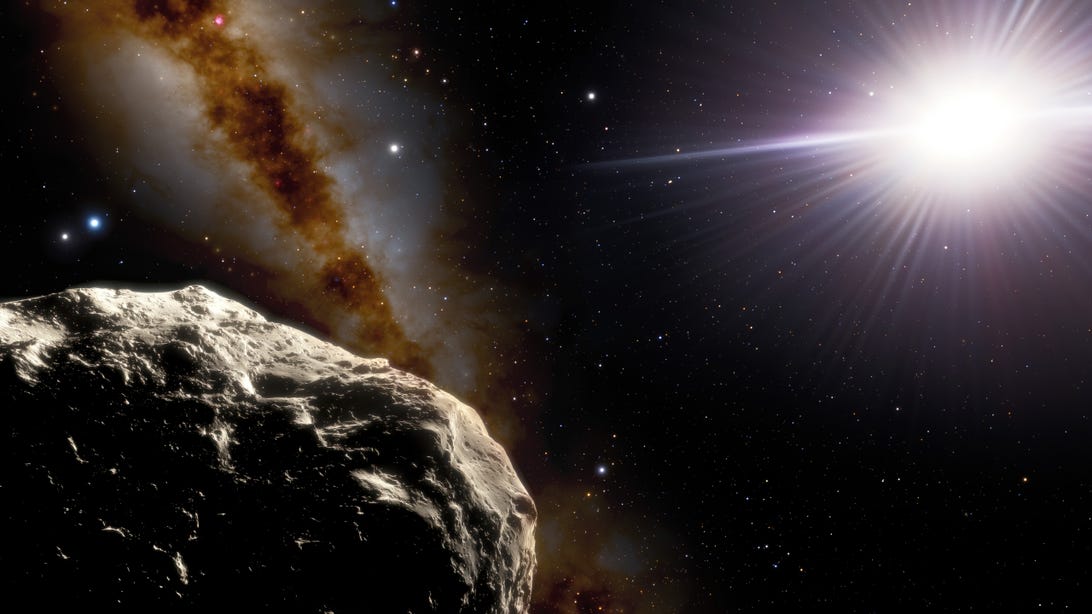US Military Confirms an Interstellar Meteorite Hit Earth in 2014

In this illustration, an asteroid is shown in the foreground in the lower left. The two bright points above it on the far left are Earth (right) and the moon (left). The sun appears on the right.
NOIRLab/NSF/AURA/J. da Silva/Spaceengine
Mysterious oblong object Oumuamua is likely to go down in the annals of science as the first known interstellar object to be spotted in our solar system, but it’s now clear a bit of cosmic rubble that smacked our atmosphere a few years earlier also came from very deep space.
In 2019, two of the Harvard researchers who studied Oumuamua in depth drafted a new paper positing that an extremely speedy meteorite that blazed a trail through the atmosphere in 2014 was also interstellar. The record of its impact and hints at its unusual origin had been hiding in plain sight in a NASA fireball database for years.
“Its high … speed implies a possible origin from the deep interior of a planetary system or a star in the thick disk of the Milky Way galaxy,” reads the summary of the paper from student Amir Siraj and veteran astronomer Avi Loeb.
However, as Siraj recently told Vice, peer review and publication of the paper have been held up because the US military had classified some of the data needed to confirm the scientists’ calculations.
That bureaucratic logjam now appears to be broken.
An unusual memo from US Space Command to NASA’s science head was shared via the USSC Twitter account last week after deputy commander Lt. Gen. John Shaw revealed its existence at the annual Space Symposium in Colorado.
6/ “I had the pleasure of signing a memo with @ussfspoc’s Chief Scientist, Dr. Mozer, to confirm that a previously-detected interstellar object was indeed an interstellar object, a confirmation that assisted the broader astronomical community.” pic.twitter.com/PGlIOnCSrW
— U.S. Space Command (@US_SpaceCom) April 7, 2022
“Dr. Joel Mozer, the Chief Scientist of Space Operations Command … reviewed analysis of additional data available to the Department of Defense related to this finding,” the memo reads. “Dr. Mozer confirmed that the velocity estimate reported to NASA is sufficiently accurate to indicate an interstellar trajectory.”
The meteorite is estimated to have been relatively small, perhaps about the size of a microwave. This means the vast majority of it likely burned up in the atmosphere and any remaining bits fell in the Pacific Ocean.
Still, Siraj is looking into the possibility of searching for any remaining bits on the ocean floor, which…
Read More: US Military Confirms an Interstellar Meteorite Hit Earth in 2014
